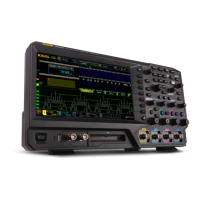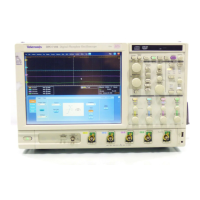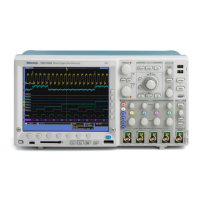Commands Listed in Alphabetical Order
A TDR preset on a
ny channel makes the follow i ng changes:
Tu rns on the acquisition and display for the selected channel.
Turns on the TDR step for the selected channel (of the selecte d step polarity).
Sets the vertical scale, offset, and position for the selected channel such
that the vertical region corresponding to the front-panel connector is placed
approximately at center screen (vertically).
Sets the horizontal scale and position such that the incident TDR step is on
screen.
Sets the horizontal timebase mode to Lock to Internal 10MHz.
Sets the trigger source to Internal Clock. The Internal Clock Rate is not
changed.
NOTE. If you are using a sampling module extender cable (or multiple extender
cables
of differing lengths), it is not possible to view incident TDR steps on those
channels not attached to the longest cable due to the effect of extender cables
on the minimum horizontal position.
Group
TDR
Syntax
TDR:CH<x>:PRESET
Related Commands
TDR:CH<x>:UNIts, TDR:CH<x>:STEP:POLarity, TDR:CH<x>:STEP:STATE
Examples
TDR:CH3:PRESET sets the instrument to predefined TDR settings for channels
3and4.
TDR:CH<x>:STEP:DESkew
This command se ts or queries the time (deskew) at which the step generator for
the even-numbered channel asserts the TDR step relative to the odd-numbered
channel of the TDR sampling module. Normally, you do not use deskew with
single channels; it is a two-channel adjustment. Channels are selected as pairs to
set deskew (for example, Channel 1 and Channel 2, Channel 3 and Channel 4, and
so on). You can set the deskew on either channel of the channel p air, and both
channels are coerced. The deskew is set as a percentage.
Group
TDR
DSA/CSA/TDS8X00/B Series Programmer Manual 2-297

